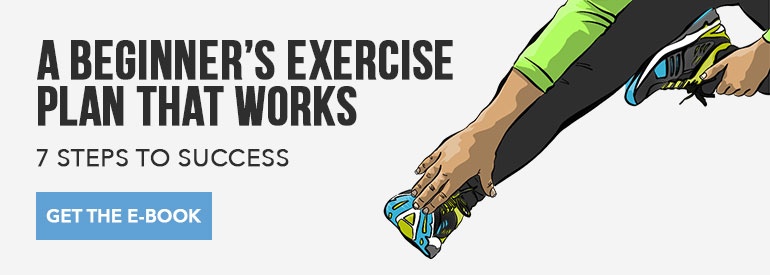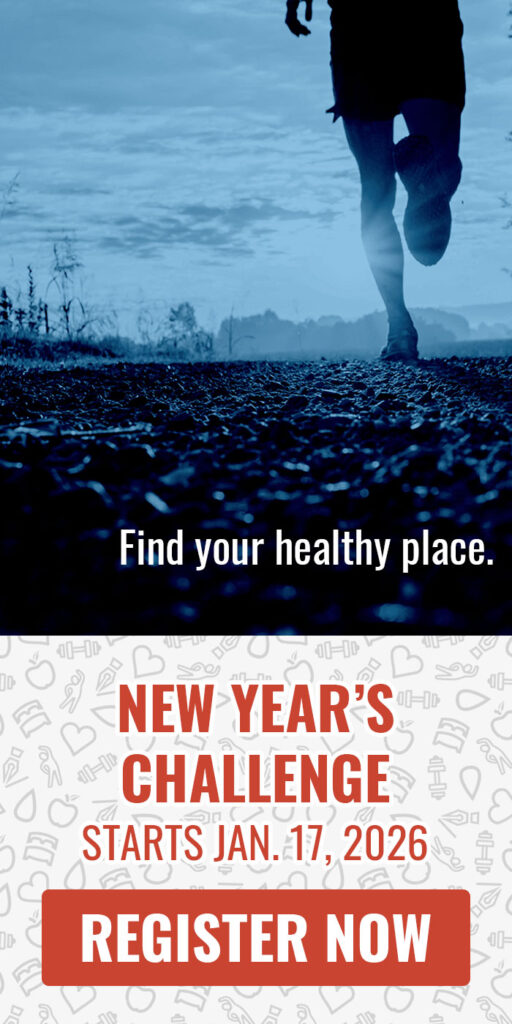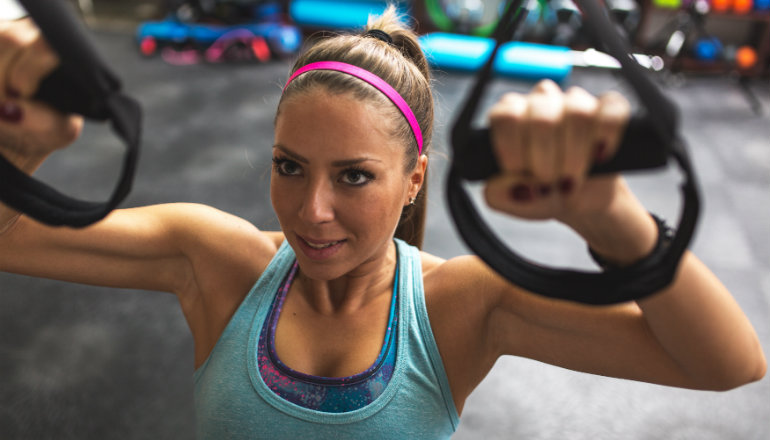 Reading Time: 6 minutes
Reading Time: 6 minutesIf you’re new to the fitness world, you may not have heard of DOMS before. But chances are decent that you will experience it firsthand at some point in your health and wellness journey. As you become more experienced at exercise, you’ll get better at gauging your intensity and workload, but in the beginning, you may overshoot — and DOMS may be the result.
Fortunately, if you do end up with DOMS, it’s not a big deal, although it can be an uncomfortable inconvenience. In fact, some among us may even consider it a badge of honor (more on this in a minute).
But this temporary condition is not a prerequisite for muscle strengthening and fat loss. DOMS is neither an inherently good nor bad thing, but it is important to understand why it happens and what it can tell you about your body and your training.
What Is DOMS?
DOMS stands for delayed onset muscle soreness. It is a condition that causes significant muscle aches and soreness, typically around 24-48 hours following a challenging bout of exercise (hence “delayed onset”). It’s caused by micro-trauma to the tiny fibers within our muscles, which leads to inflammation, swelling, and changes in normal levels of electrolytes and other fluids near the affected muscles.
A common misconception about DOMS is that it’s caused by a build-up of lactic acid, which is produced as a by-product by your body when oxygen stores are depleted. In reality, the presence of lactic acid seems to be correlated with DOMS — that is, it’s often present in the blood of people who are experiencing DOMS — but it’s not actually the cause.
The easiest way to think about DOMS is that it’s a temporary condition caused by microscopic damage to your muscle fibers that comes as a result of exercise that is a bit too intense, too long, or too challenging.
With the consistency and simple, small-step approach of the Whole Life Challenge, there is no reason why you’ll ever need to experience something like DOMS again. By committing to daily workouts, you’ll experience the freedom to take things more slowly and work out at a level that challenges you but doesn’t put you out of commission.

Why Does DOMS Happen?
DOMS can happen after any type of exercise, but especially exercise to which you are unaccustomed or ill-prepared for. So, if you lift more or heavier weights than you ever have before in a training session, or if you run way more miles than you’ve ever attempted, don’t be surprised if you feel super sore for the next day or two.
DOMS is also common after any exercise that requires a lot of eccentric muscle action. You’ll hear people talk about “doing negatives” or the “negative” portion of the lift, and what they mean by that is the eccentric portion. During an eccentric contraction the muscle must contract while it is also lengthening, and this is especially challenging to your muscle fibers.
As an example: when you stand up from a chair, your quad muscles (on top of your thighs) and your glute muscles contract and shorten. When you do the opposite movement (sit down) in very slow motion, your glutes and quads have to contract to control the movement and fight against gravity, even though the muscles are lengthening instead of shortening.
It works the same way with negative bicep curls (slowly lowering the dumbbell from your shoulder down to your side), negative pull-ups (slowly lowering yourself from the top of the pull-up bar), downhill running, and other plyometric and agility drills.
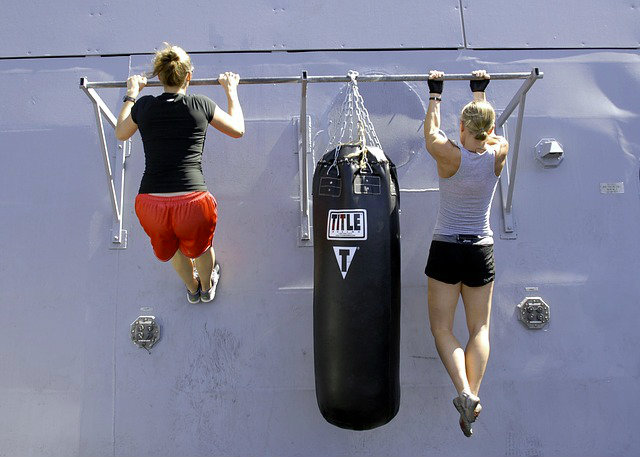
How Can I Tell If I Have DOMS?
If you’ve ever gotten out of bed the day or two after a particularly grueling workout and have felt incredibly sore and stiff, then you’ve probably experienced DOMS. Many people also notice symptoms of DOMS while trying to walk up or down stairs, get in and out of a car, sit down with any amount of control, or carry groceries.
In short, if DOMS is present, then it’s usually pretty easy to notice during our normal day-to-day function. The main symptoms include:
- Achy and sore muscles that are tender to touch
- Muscle and joint stiffness
- Decreased range of motion in nearby joints
- Increased aching and soreness when the affected muscle is stretched
- Temporary muscle weakness (due to decreased or impaired motor activation)
How Long Does It Take DOMS to Go Away?
DOMS is temporary — depending on how intense your exercise was, any delayed onset soreness should go away within about two to four days. During this recovery period, the goal will be to help your muscles naturally pump out excess fluid and decrease inflammation. You also need to give your muscle fibers time to heal (when done correctly, your muscles should actually come back stronger than before).
If you find yourself saying, “Oh my gosh, I’m so sore,” then here are some things you can do to help DOMS go away faster:
- Wear compression garments, like compression tights, socks, and/or arm sleeves
- Get a (gentle) massage (avoid deep tissue work, though)
- Use a foam roller to gently roll out and stretch your sore muscles (but avoid excessive stretching)
- Do active recovery — light and low-intensity exercise that helps get the blood flowing and muscles moving, such as walking, easy biking, and gentle hiking or swimming
NOTE: If your DOMS is significantly debilitating and presents with fever, severe muscle cramps, and/or dark colored urine, you should go to the hospital right away. While rare, these symptoms can indicate a medical emergency called rhabdomyolysis, which is associated with significant muscle breakdown that can be damaging to your kidneys.
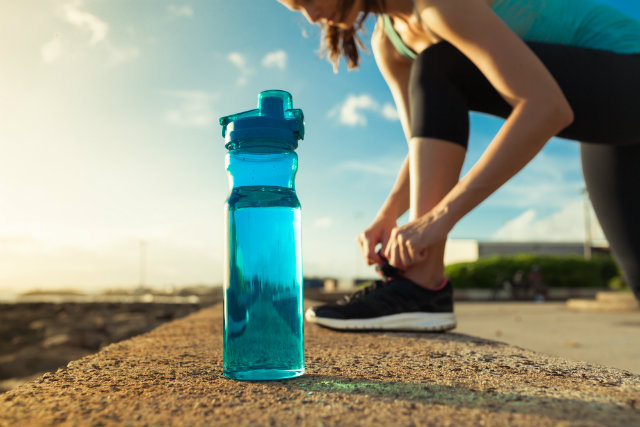
How Can I Prevent DOMS?
It’s important to remember that DOMS can happen to anyone, even highly trained athletes, and it’s not necessarily a bad thing. But it’s also not something you should use as a marker of work effort. After all, if you have DOMS because you performed exercise or session that you were not adequately prepared for, then you were putting yourself at risk for injury.
Plus, when you’re dealing with DOMS, you probably won’t be able to train as hard as you want and you may have to miss a workout or two entirely. Missing workouts or having to skimp on intensity can throw off your progress if it happens repeatedly. You want to push yourself in your workouts, but you don’t want to constantly be throwing yourself over the edge. Be mindful of when DOMS occurs and start using it to gauge your intensity levels and learn more about what your body can handle.
To minimize your chance of DOMS, consider some of these tips:
- Always schedule 10-15 minutes at the beginning and end of your workout for a proper warm-up and cool-down period. This helps your muscles prepare for exercise and safely recover from physical stress.
- Ramp up your intensity slowly. If you’re brand new to the game, consult with a trainer or coach to help you guide your progress with reps, weights, distance, etc.
- Drink lots of water every day. Aim for one-third of your body weight in fluid ounces, and probably more on training days.
- Make one of your scheduled rest days an active recovery day — it’s a fun way to get out and do some light exercise (like easy hiking, yoga, or swimming) that you may not think to do otherwise.
With the well-rounded approach of the Whole Life Challenge, you’ll incorporate not only exercise, but hydration, mobility, good nutrition, and good sleep on a daily basis. A multi-faceted approach to fitness like this is a great and long-lasting way to prevent not only DOMS but any potential injuries related to exercise.


